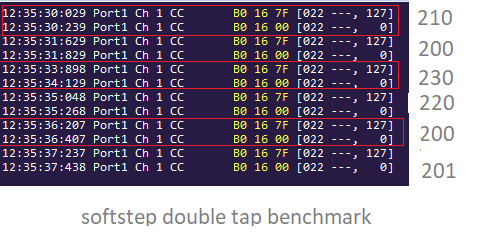Makes sense, I guess. At first glance I was overloaded with amount of buttons, to be honest, while I consider myself quite fearless when it comes to technical stuff.
For the first attempts it was enough for me to use lp3 as a simple one button looper, like ditto, for practice and prototyping ideas. For next iteration I’ve started using it as a two button looper, and adding using two tracks for layering. Now I am waiting for the SoftStep2 controller, and would try 4 buttons configuration or more to start using parts, and would like to use some midi powered drums or backing tracks in sync aiming for attempts on full solo performances. Even not started to think about trying reverse, replace and speed functions, will try it later.
What I was mostly missing all the way along - documentation. And I am speaking not about separate button descriptions, they are in place, more or less, but kind of a bigger picture, let’s say “possible example workflows” for a couple of typical use cases depending on the amount of physical footswitches available. Like, I have all these lp3 independently described functions, great, how should I combine all this stuff into something that makes sense? That’s where learning curve seems to be steep a bit, at least when you do not have a dozen of footswitches to start with assigning everything.
Without such guide, you sit with a bunch of mysterious buttons, reading their separated descriptions multiple times and trying to understand how to combine them, make it work at least somehow, and get visual feedback on leds (and screen - that I learned only from your forum reply), understand why you need extra led status led, why “part” exists three times - as track/part button, as a separate part button and as a trigger function (and in what cases trigger button is required), etc, and how to fit it into two free footswitches you have. It is kind of fun for me, but it is hard to call it user friendly.
That’s why I shared my two-buttons configuration in another looperlative topic. (Looperlative - LP3 Basic - #99 by ignis32)
Maybe it’s not a best approach available, but it is at least something somebody can repeat.
I would appreciate something like that to read for myself when meeting the plugin initially, and probably still will be able to learn something from a more complex examples.
I understand that lp3 is built with flexibility in mind, and there is no one-fits-all approach, everybody is a unique snowflake, but I can expect that author still had a feasible workflow or two in mind when designing the plugin.
Considering that extensive functionality and flexibility is unlikely to be user friendly anyway and will generate a lot of confusing options and buttons due to lv2/ui limitations, I believe that it would be nice to have these example workflows to be documented somewhere, as a starting point for learning lp3.

